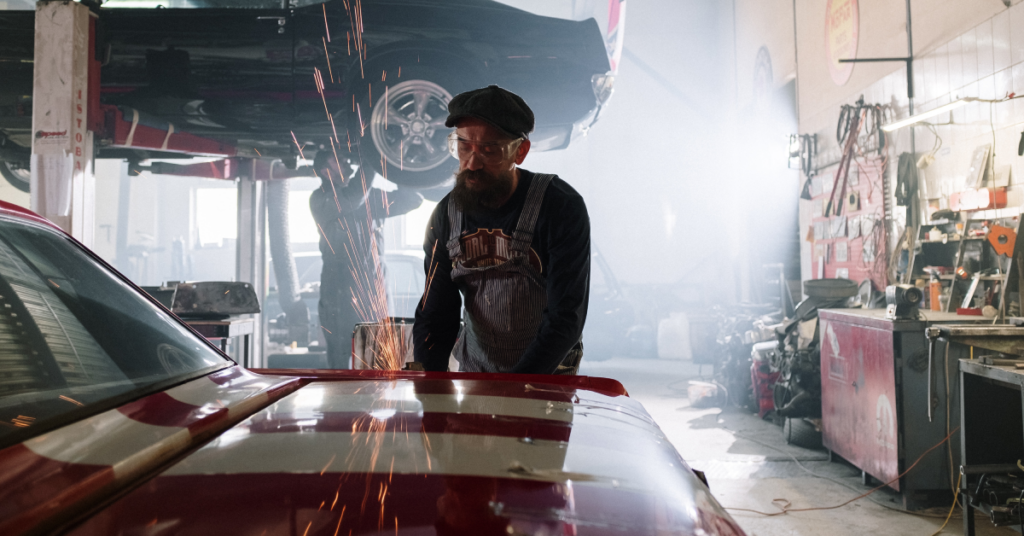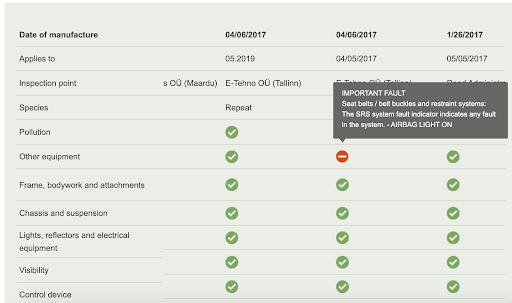
10.11.2021 •
Why you should check a used car’s accident history before you buy (+ how to do it)
Used car sales are on the rise all across Europe and so are their prices. People are looking for an alternative to public transport in pandemic times and there’s a rising demand for ride-hailing services and drivers.
If you’re one of the many people looking to buy a used car, you might have to spend a bit more than you would have a year or two ago. As such, it’s important to make sure you don’t spend a lot of money on damaged goods.
Doing a thorough visual inspection when buying a used car is essential, as is inquiring with the seller about the car’s history and performance. On top of that, one of the most important things to check is the car’s accident history.
Let’s get into why and how to do it.
Why a car’s accident history is important
Knowing whether a car has previously suffered some damage is important because accidents can impact a car’s safety and longevity. An accident can cause structural damage to the vehicle that might not be immediately noticeable – even well-done repairs can miss crucial things. For instance, what might seem like an insignificant minor collision that can be covered by straightening out the bumper might actually have caused damage to the car’s suspension.
While everything might look fine on the surface, by buying a used car that has been in an accident, you run the risk of getting a vehicle that’s more prone to breaking down. Of course, accidents vary in severity, and a small bump in a parking lot will have a smaller impact than a high-speed collision. For this reason, if you learn that the car you’re considering has previously suffered damage, it’s important to ascertain what kind and how severe of an accident it was.
In cases where there has been serious damage that the seller claims to have fixed completely, it can be a smart move to have a mechanic check the car for issues before buying to ensure that you aren’t being deceived.
On top of all this, accident history affects the car’s value, so it can be a good bargaining chip when discussing price.
But how can you make sure that the seller isn’t being dishonest and check if the vehicle has been in any accidents?
By checking the car’s history in the vehicle registry.
How to check a used car’s accident history
In Estonia, all registered vehicles appear in the public registry that’s maintained by the Estonian Transport Administration.
If you know a vehicle’s license plate number or vehicle identification number (VIN), then you can use this public database to find all sorts of information about the car completely free of charge. The available information includes data about the car, technical details, active insurance information, history of technical inspections, as well as transactions involving the vehicle.
Warning: be careful and make sure you’re checking the correct car! As the website warns, it’s not uncommon for sellers to include in their sales ads the VIN of a different car with better history.
You should pay close attention to inspection history to see whether the vehicle has had any prior issues. If the vehicle has failed inspection or had any problems, you can check the reasons by hovering over the issue:

You can also cross-check the technical details, including mileage, the seller mentions in their ad to ensure they’re not lying and you know what you’re buying. It’s also a good idea to take a look at the transaction history – you can learn how many previous owners the vehicle has had.
But one of the most important things to check is the accident history. This can be done on the Estonian Motor Insurance Fund’s registry which can be found here.
Once again, by inputting the vehicle’s license plate number or VIN, you can check whether the car has been involved in an event that required insurance intervention. It’s important to note that this registry has limitations – it only lists accidents where insurance has been involved, it doesn’t account for any accidents that a car may have had before being registered in Estonia, nor does it consider accidents where only the damaged car was involved and didn’t affect anyone else.
That said, it should still be a part of your pre-checks before purchasing a vehicle as it can provide some important information.
By using the two databases together, you can get valuable insight into the history and current status of the vehicle and you don’t have to rely on the seller’s honesty to make a smart decision.
If you’re buying a car from outside of Estonia, you can check whether that country has similar publicly available databases. The process should be similar – since every manufactured vehicle gets assigned a VIN, you can ask the seller for it and cross-check it against that country’s available databases. If no such registries are available, you always have the option to turn to a professional service provider that can check vehicle details and accident history.
Parting remarks
Discovering that a car has a history of accidents doesn’t automatically mean you shouldn’t buy it. If a car has completed its technical inspection, then it has been deemed safe for the road by qualified professionals.
Still, it’s recommended to do these thorough checks to avoid any unpleasant surprises. It will have you better informed about the real state of the vehicle as well as give you leverage when negotiating the price.

